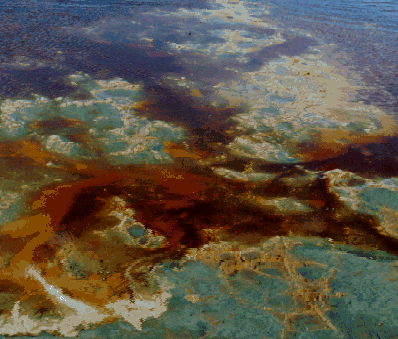|
 |
|
View of acid layer inside of CMC
Photo by: Nilden Eminer |
After CMC left the island they left behind piles of tailing deposits
exposed to the environment, resulting in substantial contaminations of surrounding
soils and a sea shore. This operation of the facility caused a substantial
environmental degradation of the area. During the operation, untreated waste
water quantities of metals and other contaminants was disposed directly
into the Mediterranean sea.. All storm runoff has been directly discharging
into the sea without any containment and settlement of sediments.
In fact, the sea shore is so contaminated that any wave action creates
a substantial discoloration of the sea water. This discoloration covers
roughly 2 kilometer of sea shore,600 meters in width. These water are utilized
by local residents for fishing which may be detrimental to their health
and killing the marine life.
In addition to these tailing piles in the area. There are a number
of large ponds containing tailing deposits. These are fairly large shallow
earth reservoirs where the washings and sludge of the floatation plants
are damped. These ponds may be a potential source for groundwater contamination
in the area the amount of these tails in the ponds is about 3.million tons
and containing iron, copper, sulphur salts and other hazardous elements.
|









